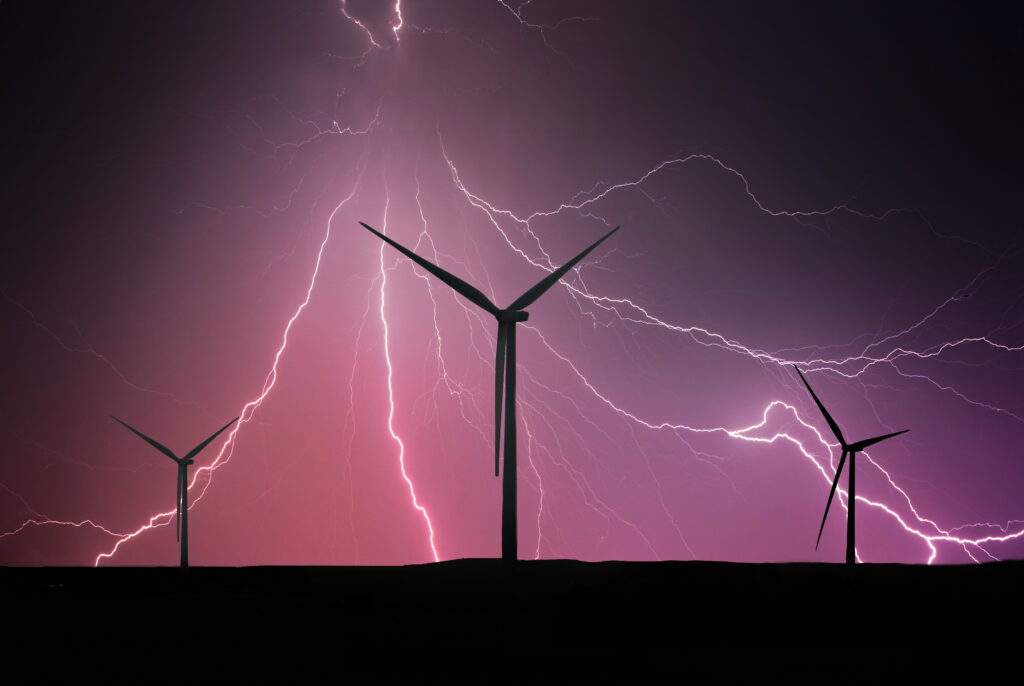Wind Farms Operational Resilience and Lightning Strikes
Last year, wind turbine installations reached 117GW, a 50% growth year over year. Units generating 15MW and with heights of 850 ft. are common. A burning issue for wind farm operators is increasing operational resilience against lightning strikes.
Traditionally, Lightning Protection Systems (LPS) are designed to reduce the probability of catastrophic events. At Scientific Lightning Solutions (SLS), we take a holistic approach that protects wind farms against catastrophic losses and significantly improves operational resilience against lightning strikes.

Wind farms are susceptible to lightning strikes due to their tall structures and expansive footprint. LPS are critical to mitigating damage to wind turbines, control systems, and associated infrastructure. LPS key requirements in wind farms are:
- Standard Compliance: Wind farms LPS should comply with relevant international standards such as IEC61400-24 and local regulations.
- Risk Assessment: Conduct a comprehensive risk assessment to identify lightning strike risks to wind turbines and associated infrastructure. Factors such as location, lightning frequency and topographical features should be considered.
- Direct Strike Protection: Implement measures to prevent lightning strikes on wind turbine blades, nacelles, and critical components. This includes installing air terminals and down conductors.
- Grounding System: Install a grounding system that effectively dissipates lightning energy to the ground and minimizes the risk of electrical damage.
- Surge Protection: Install surge protection devices (SPDs) to safeguard against transient voltage surges caused by lightning strikes that could damage sensitive electronics.
- Isolation and Shielding: Isolate and shield critical components, such as control systems, sensors, and communication equipment, to minimize the risk of electromagnetic interference from lightning strikes.
- Monitoring Systems: Implement real-time lightning monitoring systems to enable proactive measures to protect wind farm operations. Based on lightning detection data, automated shutdown procedures or protective measures can be activated.
- Emergency Response Plans: Develop comprehensive plans outlining procedures for safely shutting down wind turbines and implementing post-strike assessment and recovery protocols.
- Regular Maintenance and Inspections (M&I): Conduct regular M&I of LPS and wind turbine components to identify and address potential vulnerabilities. M&I includes testing the grounding system and performing an LPS visual/measurement inspection.
- Documentation and Training: Maintain documentation of LPS design, installation, and maintenance procedures. Train personnel on lightning safety protocols, emergency response plans, and operational procedures during lightning events.
By adhering to these requirements, wind farm operators can enhance operational resilience against lightning-related risks and ensure reliable and safe operations.
Categories

